A Glasgow excursion - the Cycling Embassy AGM's third infrastructure safari
In the middle of September, the Embassy descended on Glasgow for our AGM. As part of the weekend's events, we were escorted around the city for our traditional Infrastructure Safaris, kindly organised by GoBike(link is external). A big thanks to them!
This is the third and final infrastructure safari of the AGM weekend - reports on the first two are here, and here. would take us north out of Glasgow, and along the Bearsway through Bearsden to Milngavie, before heading back to the city along quiet streets and cycle paths.
We started by heading west along the River Clyde. There is plenty of space along the river here, but very little of it for cycling. A two-way bus corridor has recently been built here - the Fastlink - but it has been closed to buses for over a year following a series of pedestrian collisions. Cycling was banned on the 'Fastlink' bus lanes, and remains so, despite the absence of buses, but we saw people making (quite sensible) use of this space on a Sunday morning.
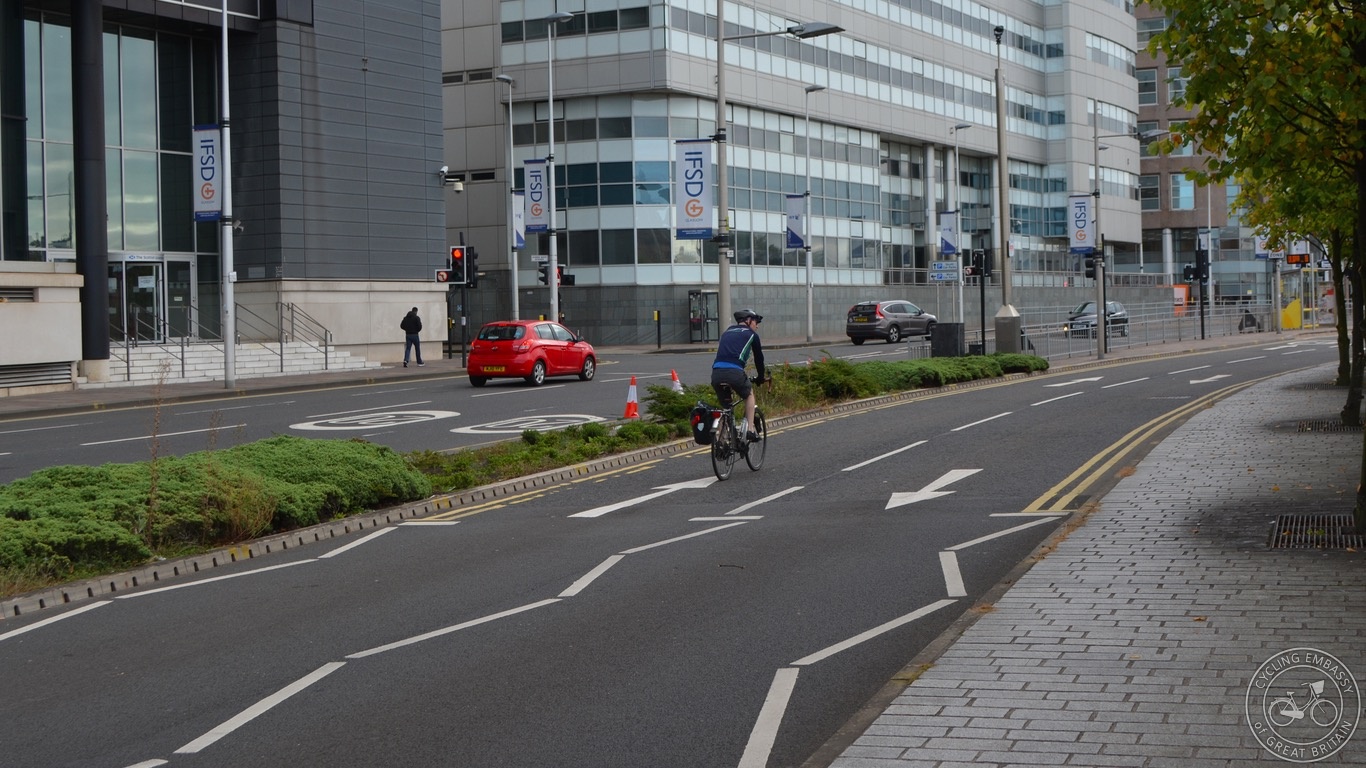
This is effectively a very wide cycle road, and certainly a much better option than using the massive, multiple lane road in the background, which I suspect is no more attractive following the addition of a 20mph limit.
However, becaus using the bus lanes are not strictly legal, we opted for the shared use footway.
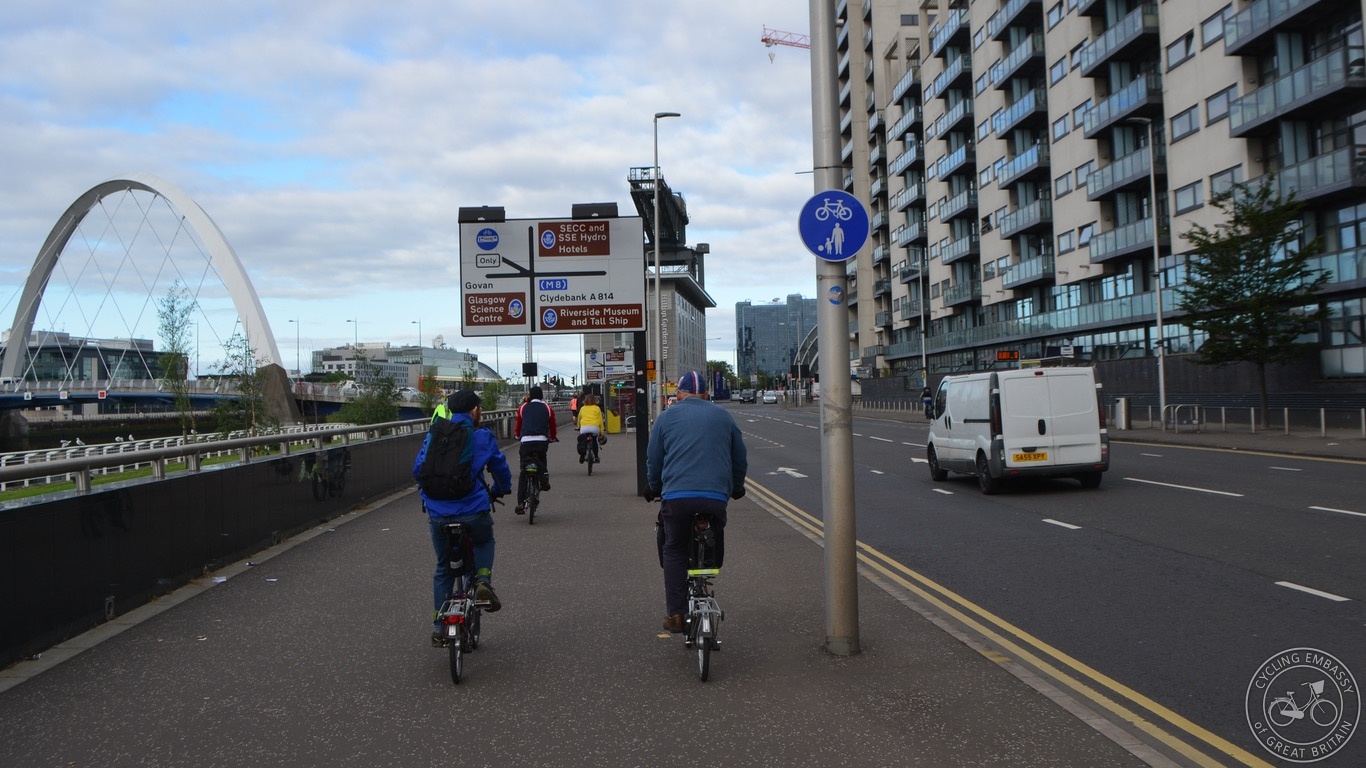
While adequate - the width was pretty good, at least initially - it was not exactly comfortable, either for people cycling, or for people walking. All the deficiencies of 'shared use' are much more apparent at anything more than negligible cycling levels. Whether it's having to deal with staggered crossings, where our large group just didn't fit into the island in the middle -
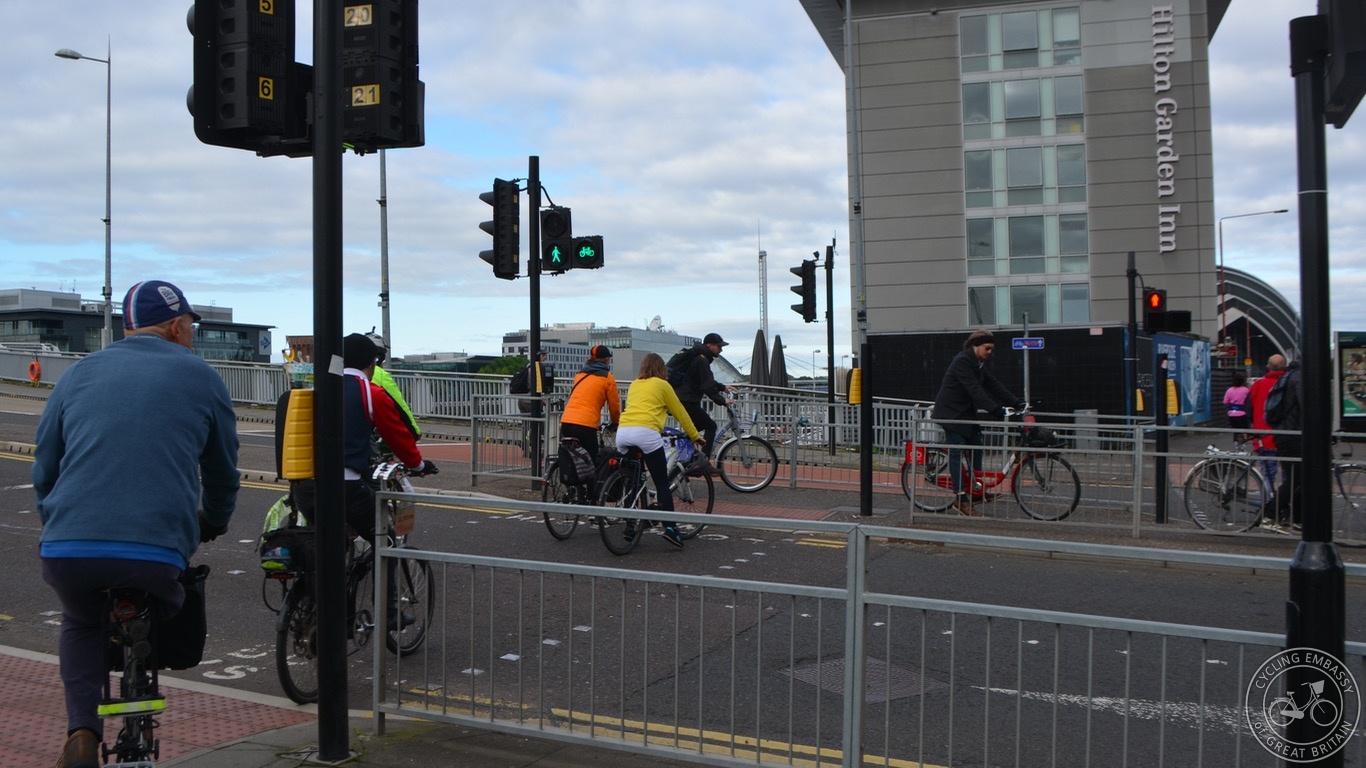
... or the the conflict involved every time we encountered some pedestrians, it's pretty clear that 'shared use' is plainly not a suitable design solution for mass cycling. It just fails once more than handful of people are cycling on footways.

From the river we started to head north up Byres Road, a wide high street that, unfortunately, is blighted by large amounts of motor traffic and parking.

It is due for a multi-million pound makeover, but from what we heard, the plans are not appropriate, as far as cycling is concerned. On a road as busy as this, protected cycleways are essential, but the proposals instead seem to involve placing cycling directly in front of motor traffic on narrowed carriageways, with a median in the middle of the road - the 'cycling as traffic calming' approach that has proved particularly controversial in London, and elsewhere. Let's hope there is a rethink and that cycling is designed for appropriately - there really is plenty of space to play with here.
The residential roads in the Botanic Gardens area of the city have been filtered, and just like the examples from our second infrastructure safari, this appears to have happened some time ago, judging by the design of the filters.
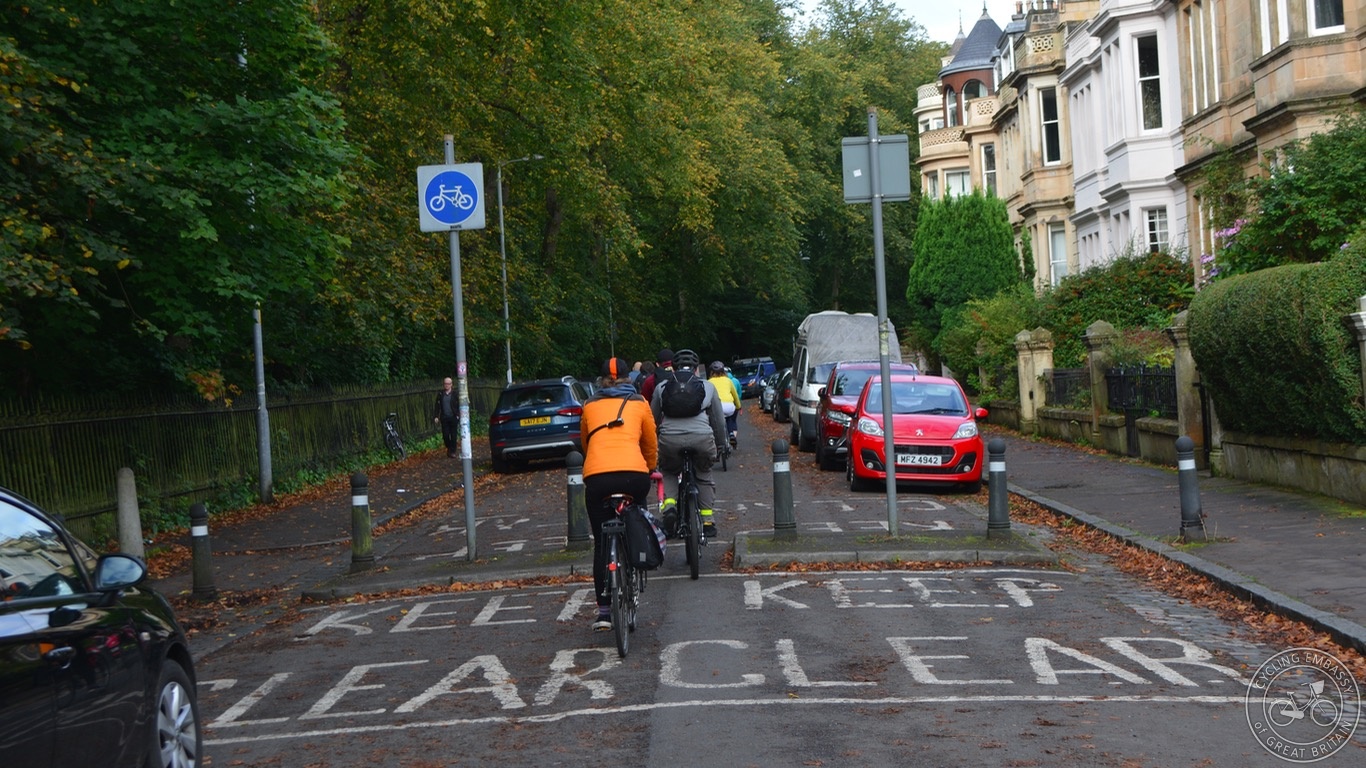
It can be done, and it has been done! These interventions made the streets very quiet, pleasant and safe to cycle along, which was a big contrast to the main roads we had to use to continue our journey to the Bearsway - large, four lane roads, busy with motor traffic (even on Sunday morning).
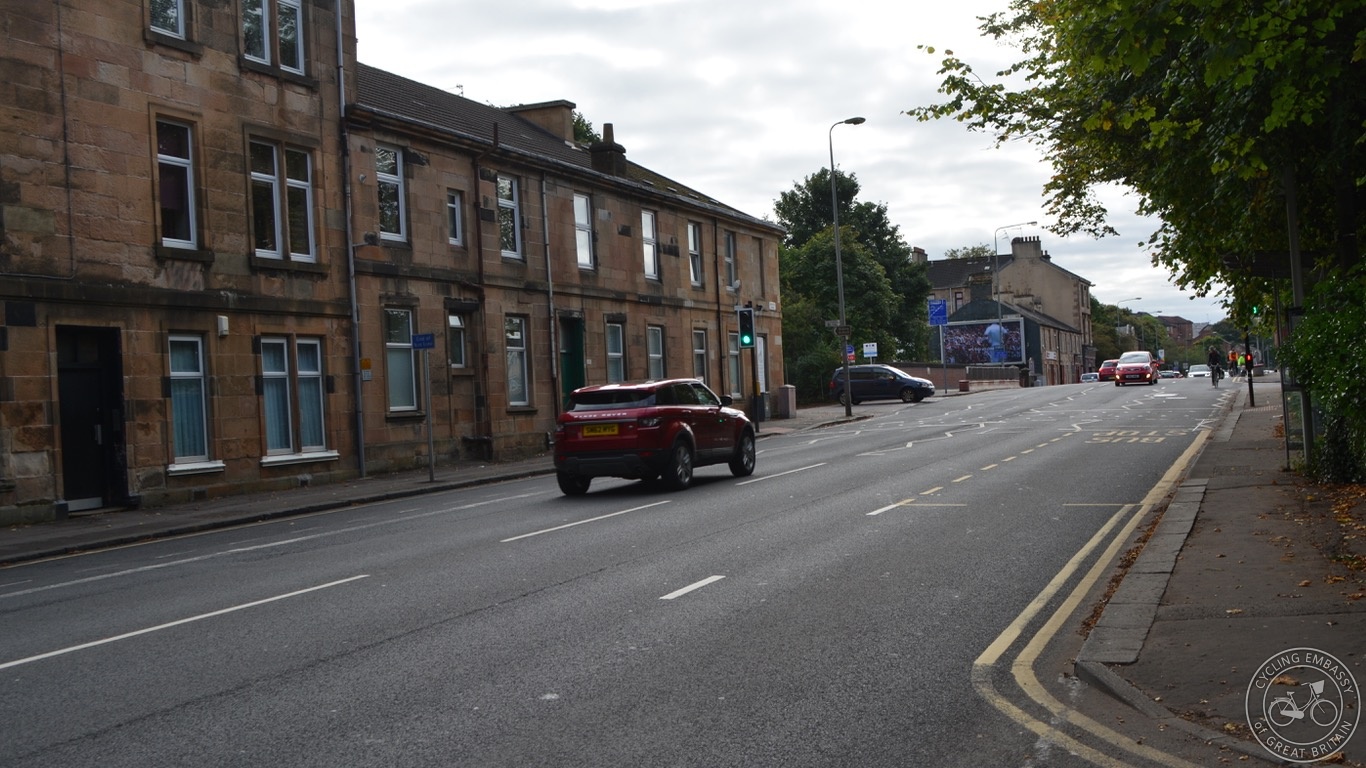
In places the speed limit was 50mph, and these roads were not very friendly to cycle on, even in a large group. The contrast with the Bearsway - where we were separated from motor traffic - was vivid.
Having seen plenty of videos and information about the Bearsway, particularly from Magnatom's blogging, and videos, perhaps the most striking thing from experiencing it in person for the first time was just how short it is. It only covers a short part of the road between Milngavie and Bearsden - less than a mile. That means it's really not fulfilling it's potential - to use it, you have to cycle with motor traffic on busy roads at either end. It's just not substantial enough to make it tempting to those people who aren't cycling now, but would like to. The case for extending it is overwhelming, but unfortunately the proposed next phases of the scheme have been bogged down in political wrangling.
Which is a pity - because the scheme itself is pretty good. Two-way cycleways are tricky to enter and exit if they aren't parts of a complete network, and that was the case with the Bearsway - we had to move across from one side of the road to the other just to start using it.

But once we were on it, I was impressed. The surface is smooth, and while the width could certainly be improved, it was possible for us to cycle along side-by-side, chatting happily - although we did have to single up slightly for people passing in the opposite direction.

I suspect that more width could have beeen taken from the carriageway - there's certainly no need to retain the hatching in middle of the road.
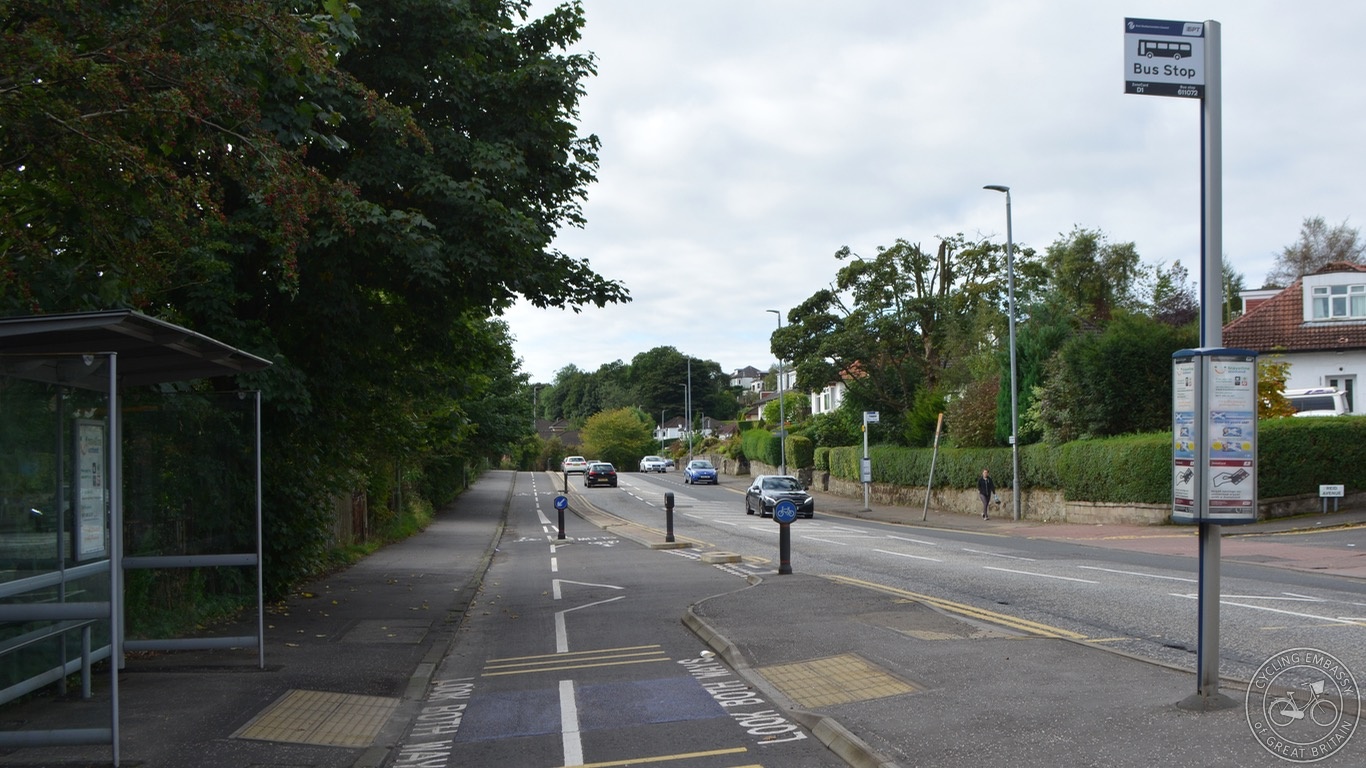
The bus stop bypasses are designed reasonably well too. It might make more sense for the shelters to be located on the bus stop islands, which are reasonably large, but the design was clear and straightforward. Perhaps a 'zebra' marking could be added at the pedestrian crossing point.
One of the side roads on the Bearsway struck me as a 'nearly, but not quite' design.
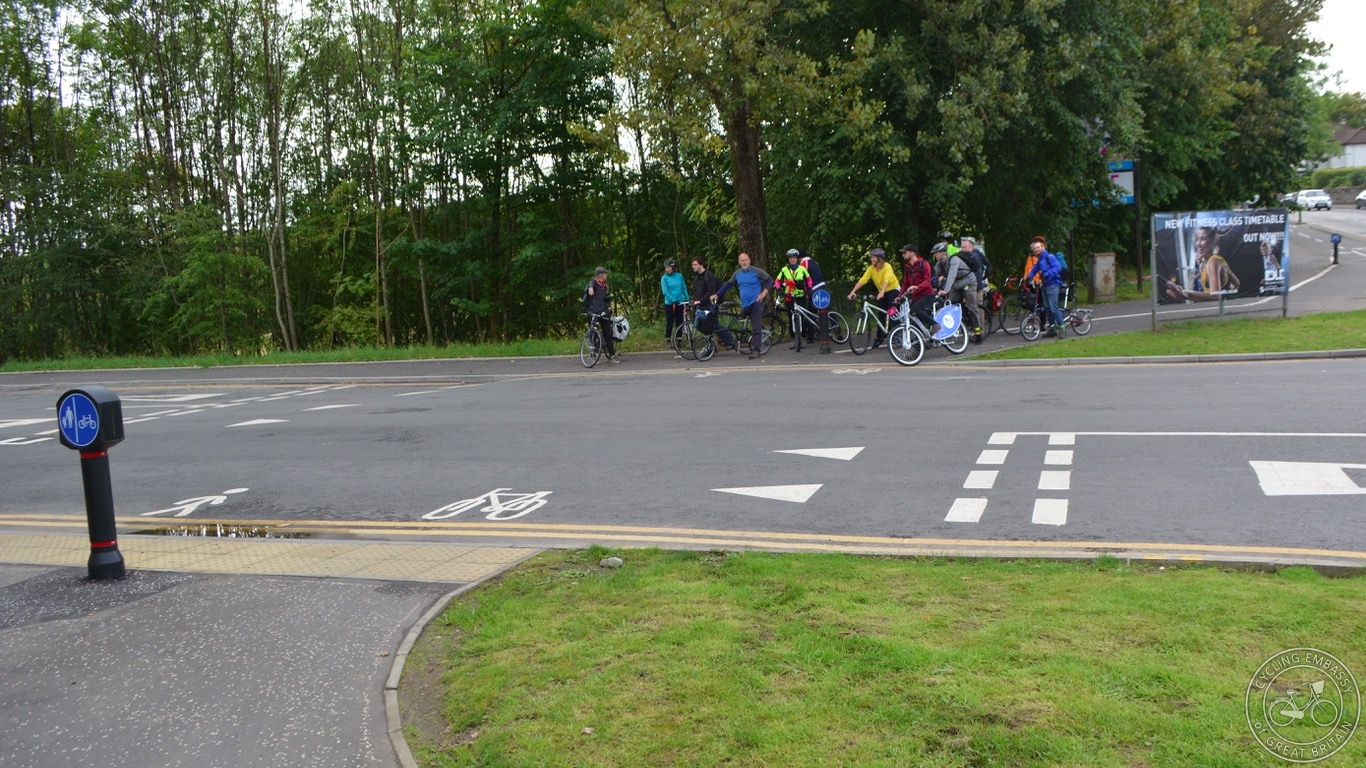
It's nicely bent out from the road itself, meaning that drivers meet the cycleway at a perpendicular angle, and also can deal with the cycleway and the road separately, rather than at the same time. Unfortunately the cycleway itself merges back to 'shared use' at the junction itself, which means that - although the road has 'give way' markings, any priority for cycling is ambiguous.

At the northern end of the Bearsway, the route peters out at the 'Magnatom roundabout', after crossing at a toucan. A redesign of this roundabout was scheduled as part of the Bearsway future phases, but again that appears to be on hold. It would be great to see the council pressing on with this scheme, which looked very promising, and I hope that happens.

We paused for a group photo at the roundabout, before heading back south the way we had come. The deficiencies of the road beyond the Bearsway were immediately apparent, as the painted lane simply came to an 'end' behind a parking bay, leaving us waiting for some time to rejoin the road in a gap in motor traffic.
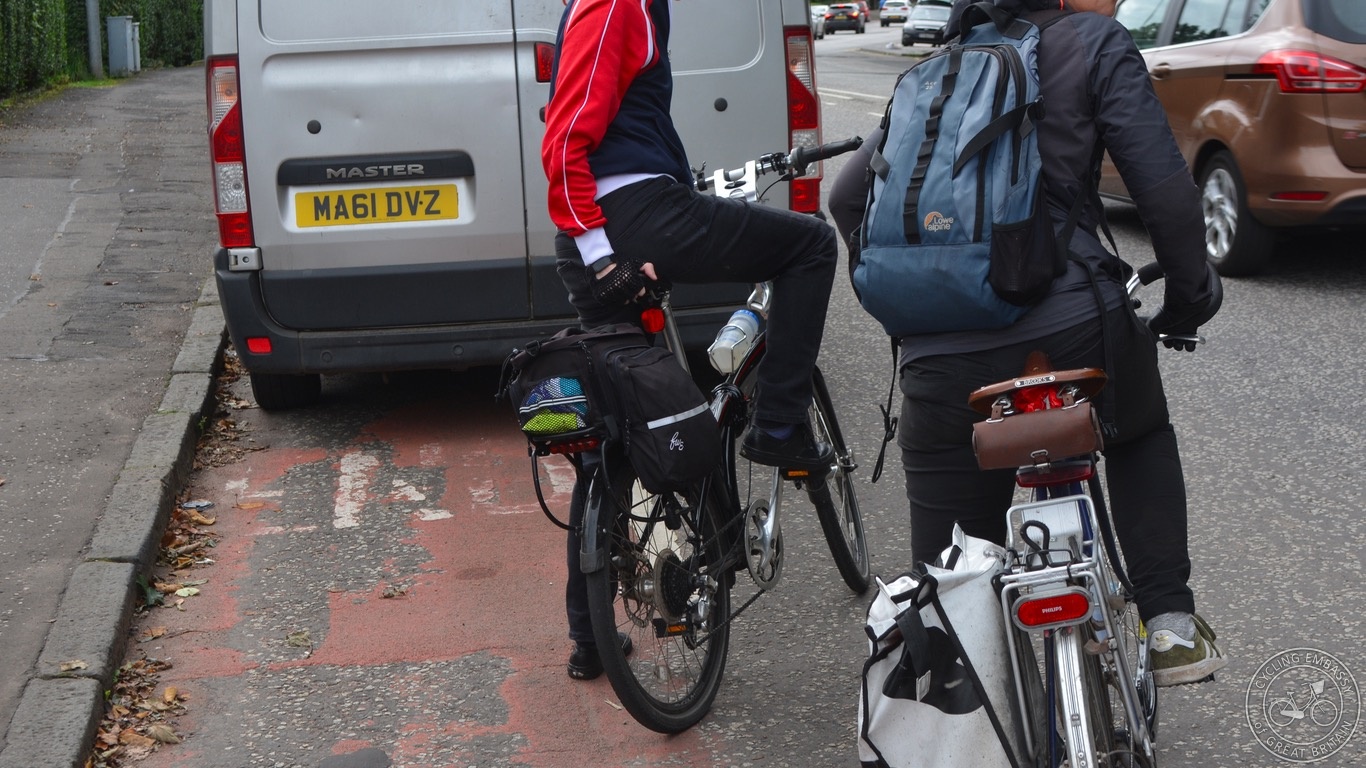
Hillfoot railway station is only a matter of a few hundred metres beyond the existing end of the Bearsway - which I think is a massive missed opportunity. Even just connecting up the railway station with the existing cycle infrastructure would be enormously helpful.
Our route back then altered, taking us along attractive, and genuinely quiet, residential streets, which have been filtered. I particularly liked the signs which clearly indicated that, although these roads are 'dead ends' for motor traffic, they are through-routes for cycling.

There was even a rather ancient looking piece of 'continuous footway' at one of the junctions along our route. Again, it shows that this kind of thing is perfectly possible - it's been done in the past, we just need to start consistently applying it everywhere.

Some attractive cycling through the University of Glasgow's campus took us back to the Clyde Canal, and back into the city centre, completing our safari.


My overall impression of the weekend - over the three infrastructure safaris, and some other trips - is that there is enormous potential in Glasgow for increasing the level cycling in the city. While there are a good number of routes and paths that we used over the weekend, the problem is that they don't connect up consistently, and the roads that you have to use in between them are, for the most part, pretty terrifying. You can't cycle from A to B with a reasonable expectation of comfort and safety. At the same time, there is plenty of road space, and - by UK standards - relatively low levels of car ownership and use, so there is a golden opportunity for redressing the balance in the city, towards active travel, and away from the private car.
